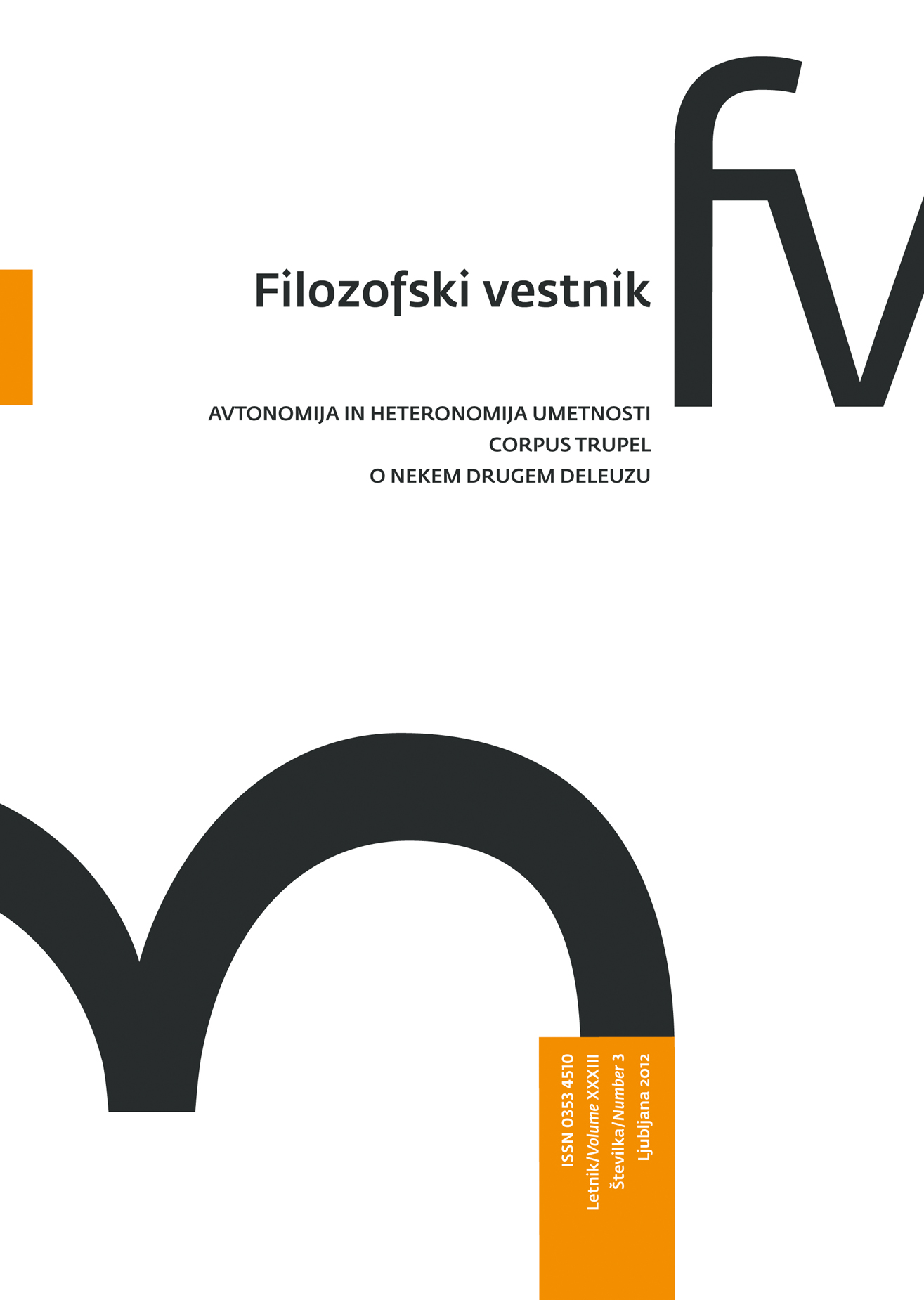Avtonomija umetnosti med kulturno politiko in politiko identitete
Ključne besede:
politični Vzhod, politični Zahod, SFR Jugoslavija, revolucija 1989, NSK – IrwinPovzetek
V pričujočem besedilu je avtorjev namen odgovoriti na naslednji vprašanji: »Ali sta bili samoupravna socialistična Jugoslavija in s tem Socialistična republika Slovenija vzhodnoevropski državi/kulturi?« In še: »Na kakšen način je skupina Irwin izvedla umetniško, kuratorsko in teoretsko reartikulacijo sodobne slovenske umetnosti kot umetnosti Vzhodne Evrope v pogojih globalizacije?« Članek najprej obravnava teoretski problem kulturnih in političnih odnosov – vzponov in kriz – med SFR Jugoslavijo, Sovjetsko zvezo in ZDA. Prikazane so spremembe v strukturah kulturnih in umetniških odnosov, ki so bili vpzpostavljeni v hladni vojni in do katerih je prišlo z globalno tranzicijsko revolucijo leta 1989. Projekt NSK in skupine Irwin z naslovom »Ambasada v Moskvi« iz leta 1992 pri tem služi kot študijski primer. Zaključni del besedila se loteva vprašanja položaja Vzhodne Evrope kot kulturnega prostora po padcu berlinskega zidu. V metodološkem pogledu je razprava zasnovana na metaforični uporabi koncepta »kognitivno kartiranje«.Prenosi
Podatki o prenosih še niso na voljo.
Prenosi
Objavljeno
2016-02-07
Kako citirati
Šuvaković, M. (2016). Avtonomija umetnosti med kulturno politiko in politiko identitete. Filozofski Vestnik, 33(3). Pridobljeno od https://ojs.zrc-sazu.si/filozofski-vestnik/article/view/4193
Številka
Rubrike
Avtonomija in heteronomija umetnosti
Licenca
Avtorji jamčijo, da je delo njihova avtorska stvaritev, da v njem niso kršene avtorske pravice tretjih oseb ali kake druge pravice. V primeru zahtevkov tretjih oseb se avtorji zavezujejo, da bodo varovali interese založnika ter da bodo povrnili morebitno škodo.
Podrobneje v rubriki: Prispevki





